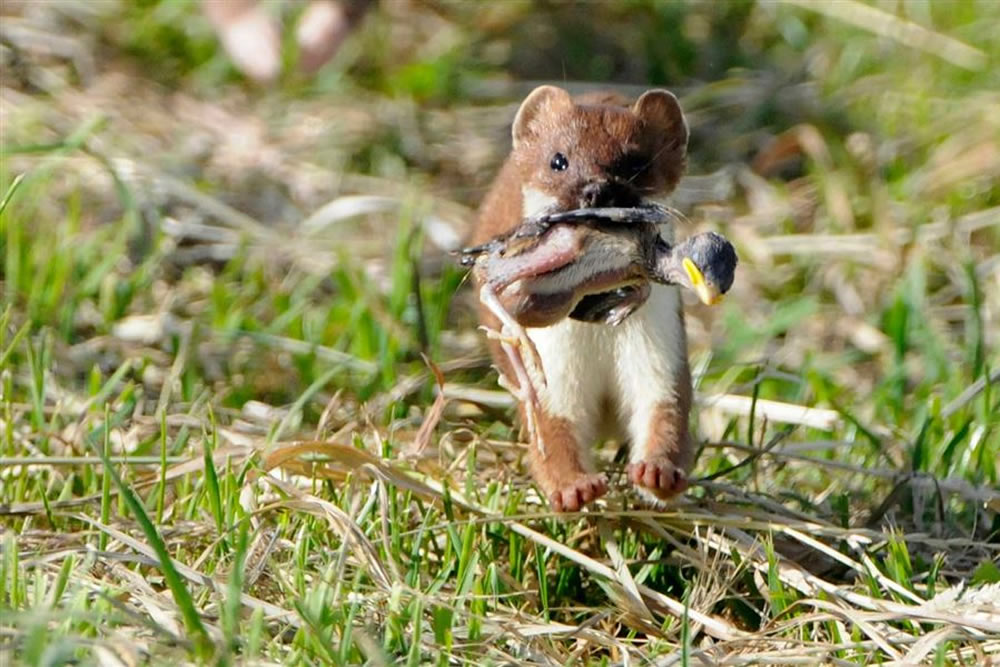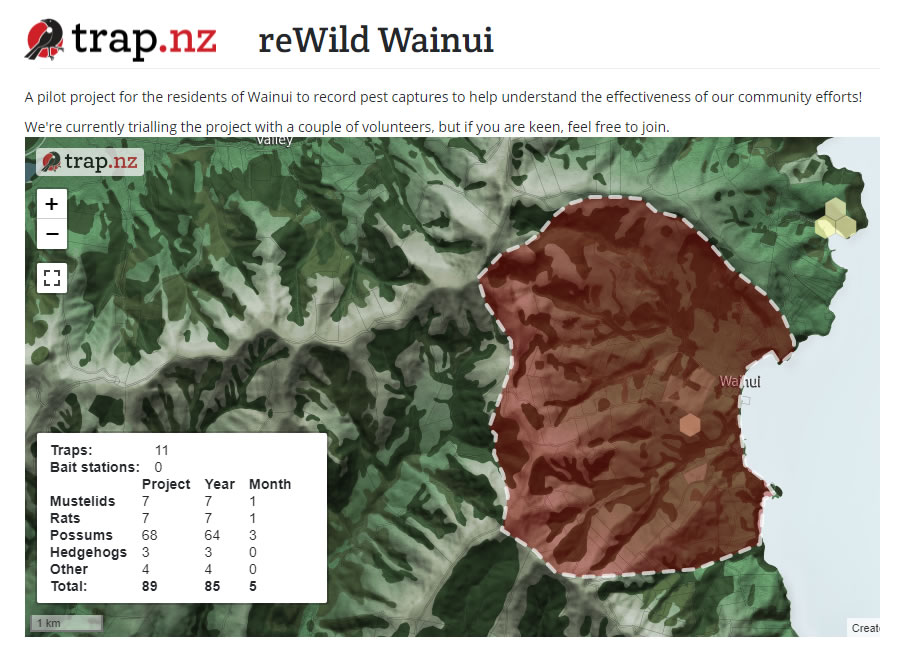Catching a mustelid is a prize worth working for, and work you may have to do as they can be quite suspicious critters!
The reward will definitely be worth the effort, but even more so that other pests, it can take time and often it’s a learning process to see what works on your property. Often this is a combination of trap placement, lure or bait, the time of year, and understanding their behaviour.
Step 1: Have you got stoats, ferrets or weasels?
It’s not that often you’ll see mustelids, sometimes scampering across a road, the best way is to look for signs …
- Mustelid droppings are long thin and strongly scented, often with a twist at each end. They are usually left in open places such as the middle of tracks or clearings.
- Droppings (scat) are typically filled with fur, feathers and bone fragments. They are hard and black when dry.
- Mustelids usually eat the flesh from the neck and head area of their prey so you may see chew marks if they are disturbed
- If there are high numbers of rabbits, rats, chickens, or waterbirds then there may also be stoats.
But the best way is to use a camera, we’ll talk more about this another time.
Step 2: Trap Placement
Trap placement is super important. Like they say “fish where the fish are”! Here are some starting points.
- Good places for traps are along pathways or near roads, tracks and fence lines, the edges of habitat, near natural or artificial cover, stream margins and waterways, or food sources.
- If you are trapping over a large area then set the traps about 100m apart.
- Place traps in warm, dry spots as many predator pests don’t like to get their feet wet (particularly feral cats and ferrets). Avoid putting traps in ground dips where water can pool or in soggy patches.
Step 3: Baits or Lure to Use
Mustelids were introduced to hunt rabbits, so it follows that rabbit is an effective lure. Try these variations
- Fresh rabbit, if you have recently shot one. However, fresh meat doesn’t last long, so you either you need to renew it regularly or use …
- Salted rabbit
- Eggs are said to be a desirable bait, but some research is suggesting only in spring(which makes sense). Stoats like eggs that are slightly off, so cracking the egg slightly can help
- Some people use golf balls or fake eggs, but these are visual rather than scent based lures and some studies have suggested not as effective
- Fish or fish flavoured cat food can also work well and we’ve found that salmon offcuts are an excellent lure, also drives feral cats crazy! When we buy salmon off the wharf we’ll use some of the belly flap and cut in into small pieces, and then do the same with the guts, put them into freezer, and hey presto, free flow lure!
Step 4: Record your catches!
The reason behind reWild Wainui was to help connect Wainui’s community of new or existing trappers. The goal is to understand the successes we are all having, and help us achieve even better results through sharing knowledge.
Recording your catch is important to understand how many we are catching, but also what traps are working, what bait is most effective, and where we are catching them so we can identify hot spots or gaps.
We can help you get setup on Trap.nz, and they have a good app to help record your catches.
Mustelid Trapping Tips
- Stoats have an excellent sense of smell. A piece of bait or fish can be dragged around on a piece of string to make a scent trail leading to the trap
- Mustelids can be very suspicious of baits and traps. If you don’t catch them immediately then experiment with different bait and locations.
- Similarly, because they have such large home ranges there may be significant periods between visits.
- The use of cameras is the best way to determine if they are frequenting your area.
- Download DOCs excellent Predator Free 2050 “Practical Guide To Trapping” (PDF download), it has a wealth of knowledge for the keen trappers!
Stoat & Ferret Facts

Mustelids includes ferrets, stoats and weasels with stoats in particular being NZ’s pest “serial killers”. While of the same family they are all a little different.
Stoat & Ferret Traps

Mustelids vary in size from the small weasels to the considerably larger ferret. This means that one trap does not kill them all, find out which ones do.
Stoat & Ferret Trapping Tips

Similarly, what works for one, may not work for the other. Checkout these top tips for increasing your chances of catching a stoat, ferret or weasel.
Let’s work together to help reWild Wainui!
Join our community initiative to reduce Weeds, remove Pests and replant Natives.
